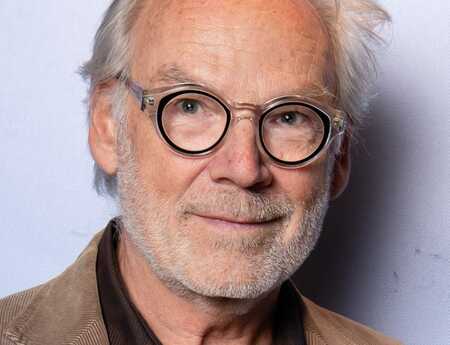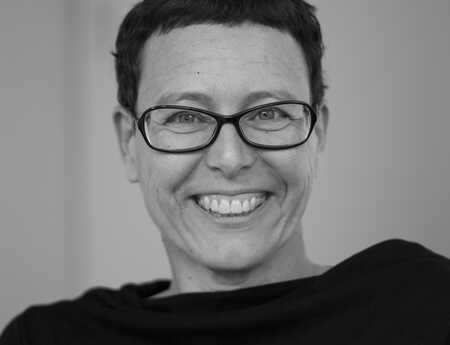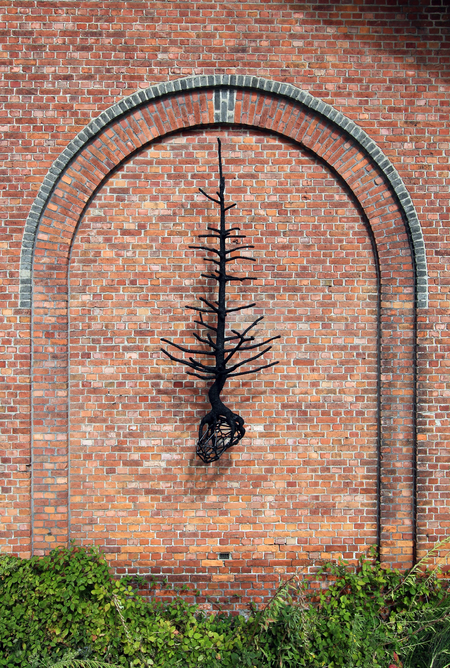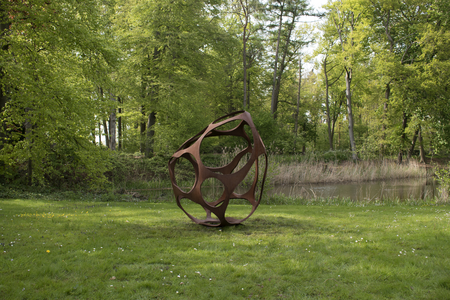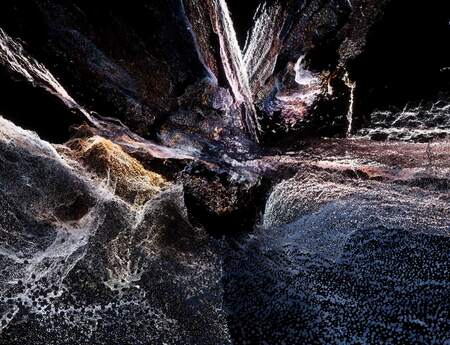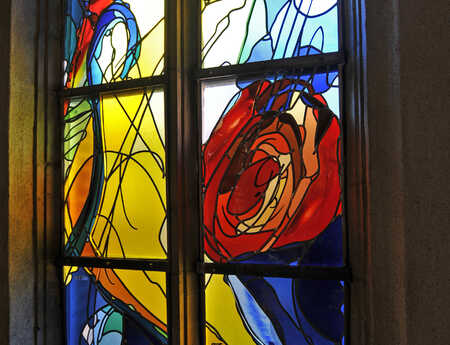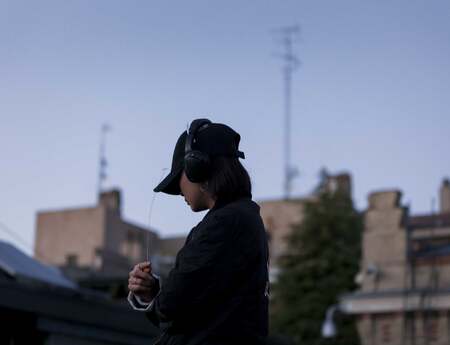Josua Wechsler at the Noordwijk Biennial
‘With my work I try to mediate between nature and man’.
Artists are masters at visualizing, imagining, and persuading. With their work they tell stories that make a lasting impression. Josua Wechsler explores in his sculptures the relationship between man and nature. As an artist, he wants to convey to us his amazement about the natural processes of growth and decay. For the Biennial in Noordwijk he made a sculpture group that consists of four wonderful standing fern leaves.

My interview with Josua Wechsler (St Gallen, Switzerland, 1986) takes place in his studio in Ospel, near the nature reserve De Groote Peel. A year ago, he and his partner bought a large plot of land with several buildings and barns, one of which he uses as a studio. Recently Josua planted a vegetable garden there, and there are plans for a food forest border. We talk about his love of nature, the hiking through rough nature he does regularly, and the necessary transitions needed to keep our planet liveable.
I see plant and leaf shapes reflected in much of your work. Why is that so?
My work revolves around the cycle of growth and decay and the growth process on itself. I work a lot with growth forms, but also with skeletons of plants and trees that are in decline. For example, the work Unlimited Growth, a pine wrapped with black material; that is actually a very critical sculpture. It's about our ecological footprint; we think unlimited growth is possible, but through all that growth, nature's biodiversity gradually disappears. So, we end up creating decay in our own environment. Growth is still the adagium in our society, but in our days and age it's more about what you haven't done in terms of consumption.
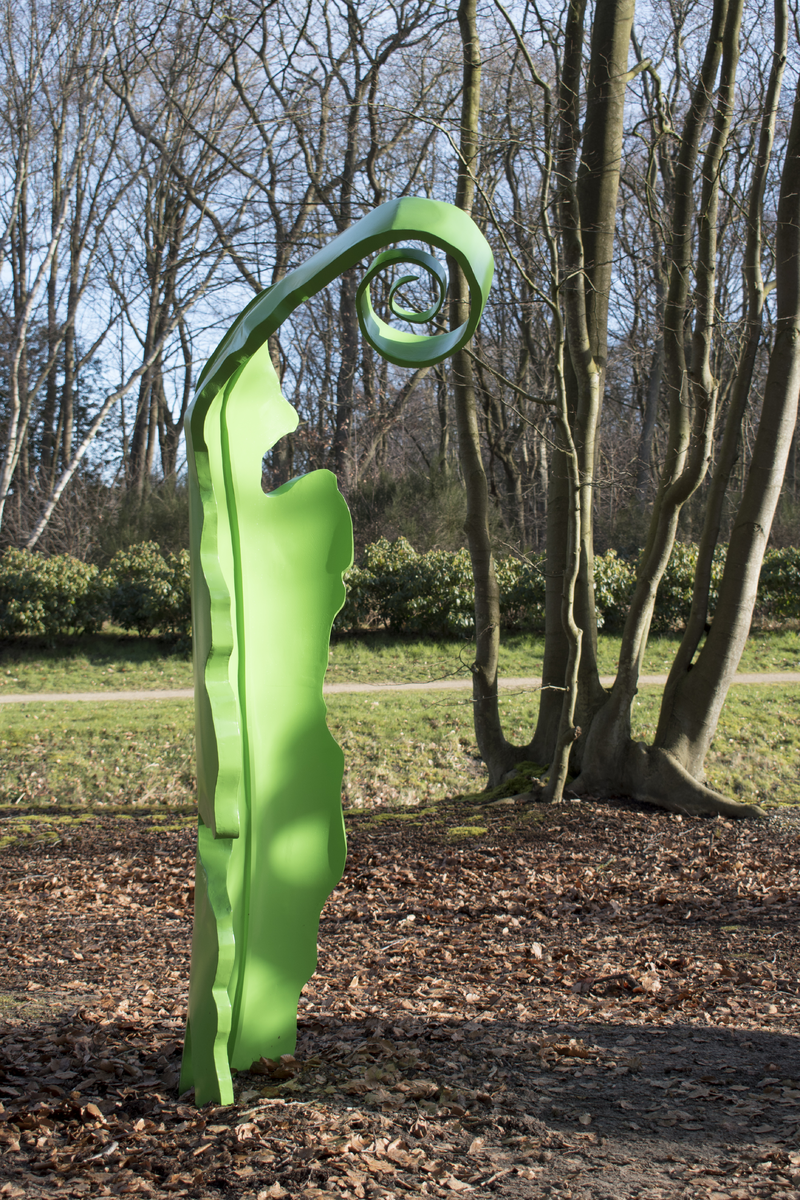
Still, you tend to take a more positive approach to nature and environmental issues in your work?I especially like to share my fascination for natural processes in a sculpture and to bring such a work inside a (residential) space thus creating a more humane, liveable living environment. For the outdoor space, other criteria apply to me.Then Josua takes the photos at his laptop from his presentation for the Noordwijk Biennial, and shows me four standing ferns, arranged in a circle on a little island in the nature park Nieuw Leeuwenhorst.
Why ferns?
A fern evokes a primal feeling for me. Ferns have existed much longer than we humans have, because they have been able to continually adapt as a species to changing natural conditions. This has allowed them to survive. Adaptation is also what this biennial is about; the title of the biennial is Transitions – art on spirit rich soil. Or in other words, how do we deal with the necessary transitions to have a future in our natural habitat.
These four ferns differ in shape. Is there a thought behind that?
I wanted to add something to the nature there, an image that refers to nature but isn’t really nature. My standing ferns form a circle, just like the surrounding trees. As a viewer, this makes you feel the need to walk around them. I have depicted four stages in the growth process of a fern: a nascent fern, the unfurled version of 3.7 m high and two ferns heading toward decay. The latter two have already reached the peak of their existence. In contrast, such an unfurling young fern represents strength and growth, a new beginning. It is a positive image of the future.
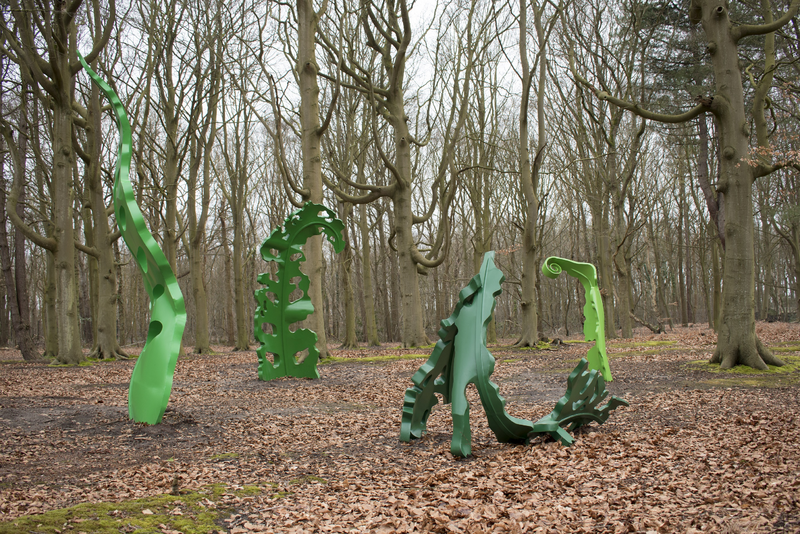
Does the sculpture group also have a metaphorical meaning?
On the island there are beautiful, old beeches that have sinuous forms and form a circle. These kind of places with tree circles were in earlier times places where meetings took place and rituals were performed. In our time, this happens much less. We have our meetings through zoom or skype. It would be nice if we held such meetings or discussions of this kind in natural landscapes. Such an environment with trees and ferns can certainly influence your thoughts and decisions in a positive way; we need to start thinking about how we want to relate and adapt to today's climate change.
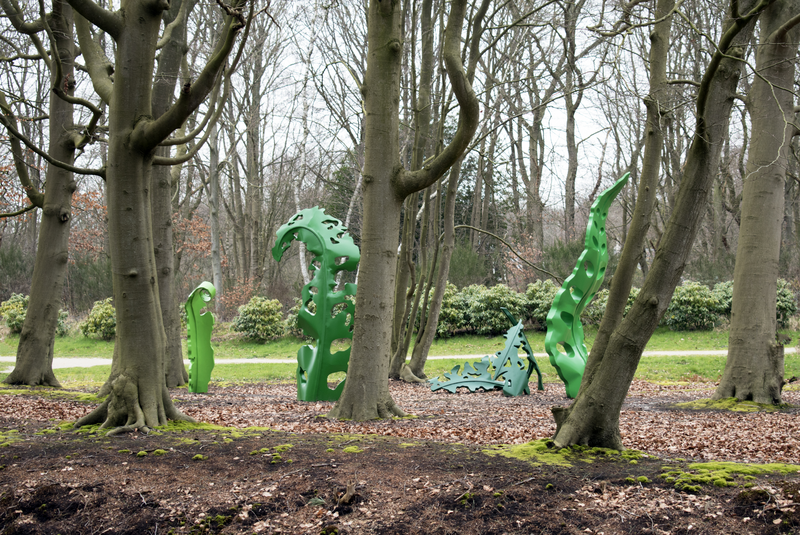
Are humans able to adapt at all?
In itself, yes. We have been on the moon and can dive into the deep seas by using tools and our technical ingenuity. But it is difficult for us to change habits and develop ourselves in a good direction. Now we need to look more critically and take action.
In a previous interview, you mentioned that you often wonder how to live a life where you are a good and conscious part of the world you live in. Have you figured that out by now?
That's actually a constant quest. Many problems in society arise because people are not sufficiently attached in their environment and in nature. They do not feel connected to that. When I notice in myself that I am becoming too detached, I seek for adventurous hiking through nature. Then, for example, I take a hike across the Rhine on a stand-up paddle board, go living in a cave in a wild place in Switzerland for a month, or take a bike ride through the mountains. Then you fall back on the basic necessities of life: that you are warm, that you have food, and a roof over your head.
And in your work as a sculptor? Aren't you a polluter?
Depending on what materials I use, creating becomes more problematic anyway. I'm still searching for solutions; changes have to take place here too. The best thing is to work only with natural materials, but that's not always possible. If you use only natural materials such as wood, the sculptures decay much faster. So sometimes industrial materials are necessary. You can also question the use of bronze (an alloy of copper and tin), as well as aluminium; all raw materials that must be mined are actually problematic.
Of course wood is a good material to use, provided new trees are planted. And I do use trees felled by storm damage for my work. I don't use wood from the tropical rainforest or a primary forest.
Would it help to give nature rights, and to enshrine those rights in an international treaty, so that organizations can start lawsuits on behalf of nature?
In New Zealand, a river has already been given rights; that process was started by indigenous people. But if you look at the Rhine, that won't happen. The economic importance for inland navigation there is far too great. As I paddled across it, I wondered, "Is this a river or a highway?” By the way, the Rhine has become much cleaner in recent years; it can be fished, and you can swim in it again.
Do you think you can make a positive contribution to reducing climate change with your art?
I am a part of this society, to which I would like to contribute. As an artist, I see myself as a mediator between nature and humans. Through my work, people can find an access to look differently at natural processes and become fascinated by them. I hope that the consciousness of nature will be awakened in people who view my work. And that they begin to realize that things need to be done differently.
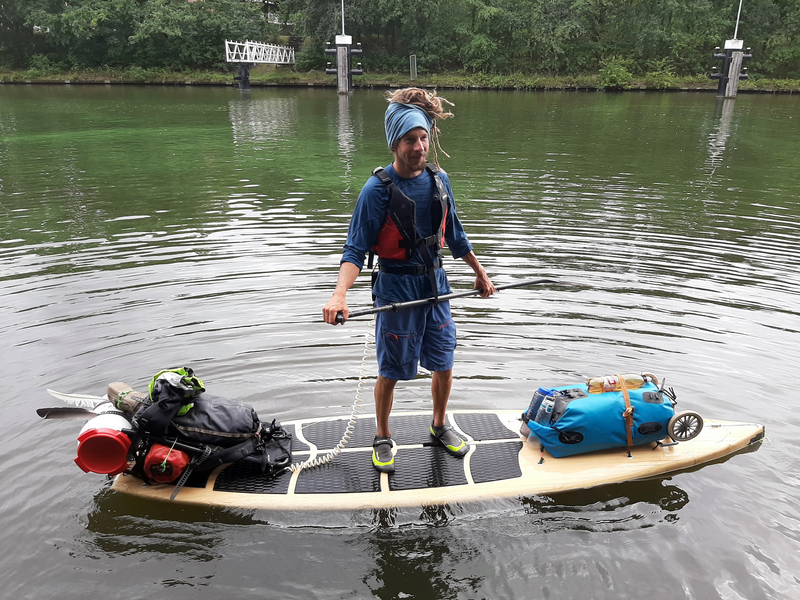
Author : Etienne Boileau
Translation English - German: Sybille Hayek
Further Links
www.biennalenoordwijk.nl (21 March - 21 August 2023, Free entry)
This article appeared in summarized form in Beeldenmagazine 3 # 2023
www.beeldenmagazine.nl

